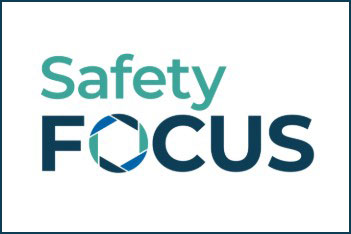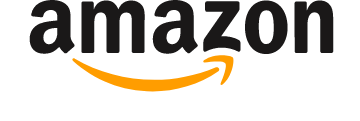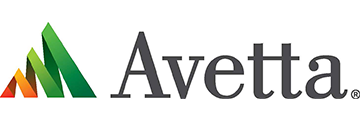
Shane Bush CPT, President of BushCo Inc., Idaho Falls, ID, will be presenting both “Predicting Errors Using Human Performance Measurement Tools” and "Disruptive Safety: Managing Safety in an Industry Facing Changes Forced by Competition” at SeminarFest 2017. In these sessions, Bush will explain the human performance measurement tools used to help get human error related incidents in the workplace down to zero as well as how to evaluate, adapt, manage and turn disruptions into safety advantages.
Predicting Errors Using Human Performance Measurement Tools
Describe some human performance measurement tools used to predict errors.
Some of the more popular human performance tools are a questioning attitude, peer check, stopping when unsure and forcing functions.
Humans make an average of five errors an hour. Errors are defined as “doing something you didn’t intend to do.” The outcome could be good or bad, causing injury, interrupting mission or damaging equipment. Or, they have little or no consequences. The good news is most errors have little to no consequences. So, applying the tools would be based on the potential outcome of an error. If I asked you to write a procedure related to operating equipment that if performed incorrectly could damage the environment, I may require a peer check of any steps with this potential. If the outcome has a significant bad potential outcome, I may create a forcing function that doesn’t allow you to operate it incorrectly (for example, gas bottle fitting specific to a gas).
What is the difference between active error and latent error?
An active error has immediate consequence and you typically know who committed it. If someone backs a vehicle into a building that witnesses observe, it would fit the category of an active error (immediate consequences or building damage), and you know who did it because it was witnessed.
A latent error is almost the opposite of an active error. The consequences are typically delayed and often you don’t know who committed the error. If I asked you to write a procedure to operate sensitive equipment and you made an error while writing the procedure, we may not use the procedure for a year (delayed or latent), but when we do we have a bad outcome because of the error. It may have been so long since the procedure was written we may not even know who wrote it or who committed the error.
What are some common error precursors found in the workplace?
Error precursors are conditions that are known to increase average error rates. Some of the most common are time pressure, distractions and interruptions, first time and new technique, as well as overconfidence. Error precursors vary from person to person, task to task, sometimes even time of day. They can be challenging to manage. But once eliminated or mitigated, companies have had significant success in reducing errors and, more importantly, reducing the consequences of errors.
When and how did NASA conduct the studies that are referenced in the workshop?
Studies have revealed that human beings cause errors more frequently than we think. A NASA study revealed that pilots averaged about 11 errors per hour during emergencies and unusual circumstances. Under more normal conditions, depending on the activity, the error rate is closer to about three to seven errors per hour. Most errors are trivial, having no consequence to plant or person.
Why do not more events happen? Defense-in-depth prevents, catches or mitigates the effects of error. Defenses are established through engineered controls that optimize equipment condition and the human-machine interface, various administrative controls such as procedures and training, cultural controls that address the values, attitudes, beliefs and habits of workers, and, finally through management and oversight controls that promote accountability for managing defenses.
Disruptive Safety: Managing Safety in an Industry Facing Changes Forced by Competition
What are some examples of industries that have caused major safety issues and what sort of changes were implemented? Did they work?
One of the most documented industries where competition and new technology has been the most drastic is the medical industry. Depending on the source, approximately 200,000 people die every year in the U.S. due to medical errors and mistakes brought on by new technology and competition to see more patients to increase revenue. Big medical industries are trying to compete with walk-in clinics that typically have lower overhead. Also some companies now offer medical pods that are brought right into an office. Employees can visit the pod on break or lunch and be examined by a doctor located hundreds of miles away. While the complete medical industry is addressing this, the most aggressive is the Department of Veterans Affairs. They are instituting the human performance approach to catching and reducing errors and/or the consequences of errors with the hopes of reducing lawsuits.
Another industry with a well-documented history of competition causing significant unwanted outcomes is the automobile industry. Big auto companies try to compete with new technology or cheaper technology only to find out they have inadvertently introduced new risks not previously understood. For example, defective airbags, ignition switches that shut the car off in the middle of traffic and brake systems that fail. This has caused the auto industry to increase its quality control, which cuts into the bottom line; that deficit has to be made up somewhere else in the process, such as pressure to produce more product, which potentially just set your next weak link. On the flip side, the auto industry is one of the most aggressive in providing products that compensate for human error with features such as blind spot detection and auto braking.
What are some examples of industries that did not survive as a result of not being able to shore up safety issues?
Industries typically do not go away, companies do. For instance, let’s look at the petroleum industry. Due to some major fatal events, many of the traditional approaches to the petroleum industry are being replaced with fracking. While fracking is controversial and going through a lean time, it will inevitably return when oil prices increase again. We have all watched major petroleum companies that let competition to produce more product result in major costly events.
A utility company I have worked with filed bankruptcy approximately 7 years ago with safety events being a significant contributor. The company has since incorporated human performance and a new management team and approach that is allowing the company to thrive again.
How can organizations pivot when they encounter disruptions and overcome safety-related issues caused by competition or major change?
You must stay ahead of the curve. New technology, which creates more competition, must not be ignored. I am predicting that technology will change the way healthcare is provided in the U.S. Those not willing to get on board will become obsolete as practitioners or as companies.
T. Shane Bush is the co-founder of BushCo Inc,. a company that helps companies become high-reliability organizations by eliminating unwanted outcomes related to human error. Shane holds a B.S. in Corporate Training from Idaho State University, and an M.S. in Industrial Safety from University of Idaho. He is an adjunct professor at University of Idaho, where he teaches graduate-level courses in behavior-based safety, human performance fundamentals and human error investigation.



